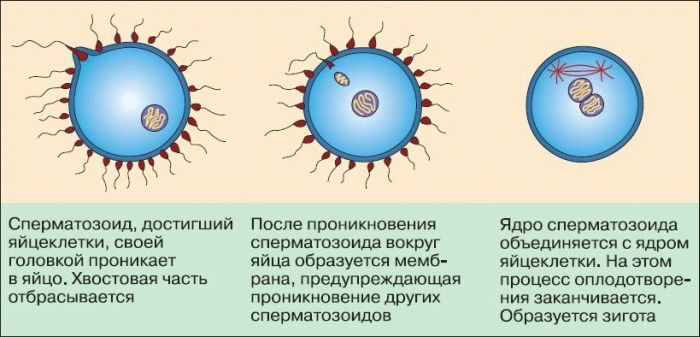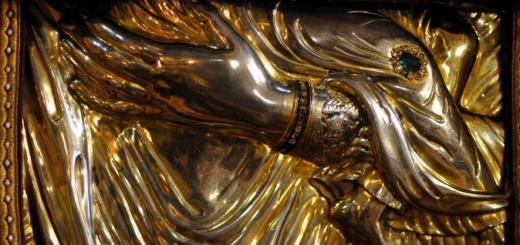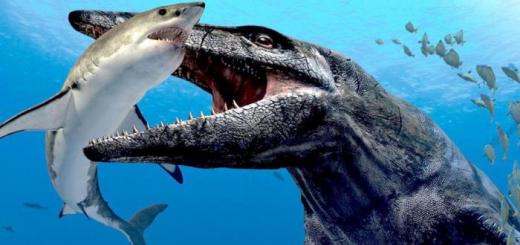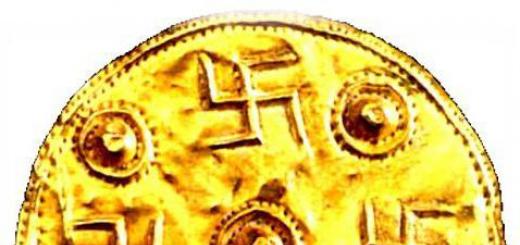Current page: 9 (total book has 27 pages) [accessible reading excerpt: 15 pages]
Chapter 2. Reproduction and individual development of organisms
After reading this chapter, you will learn:
how different types of living organisms reproduce;
how does a cell divide?
how gametes are formed and fertilization occurs;
how the embryo develops.
Reproduction is one of the most important properties of living organisms. All living beings without exception are capable of reproduction. Only reproduction, that is, the reproduction of one's own kind, allows all types of bacteria, fungi, plants, and animals to survive.
The methods of reproduction in different organisms can be very different from each other, but cell division is the basis of any type of reproduction.
Cell division, however, occurs not only during the reproduction of organisms, as occurs in unicellular creatures - bacteria and protozoa. The development of a multicellular organism from a single cell involves billions of cell divisions. In addition, the lifespan of a multicellular organism exceeds the lifespan of most of its constituent cells. Therefore, almost all cells of multicellular creatures must divide in order to replace dying cells. Intensive cell division is necessary in case of injuries of the body, when it is necessary to restore damaged organs and tissues.
§ 31. Forms of reproduction of organisms. asexual reproduction
1. What type of reproduction is the oldest?
2. Are all living beings capable of reproduction?
reproduction - this is a universal property of living organisms, which consists in the ability to produce similar individuals of their own species. Thanks to reproduction, there is an endless change of generations of each species. In the process of reproduction, unique combinations of genetic material can occur, resulting in the appearance of hereditary changes in the body. Thus, the genetic diversity of individuals within the same species arises and the foundations for the variability and further evolution of the species are laid.
Reproduction is a necessary condition for the existence of life on Earth.
Asexual reproduction. The oldest form of reproduction on our planet is asexual reproduction. It consists in the division of a unicellular organism (or one or more cells of a multicellular organism) and the formation of daughter individuals. More often this form of reproduction is found in prokaryotes, plants, fungi and protozoa, it is also observed in some animal species.
Types of asexual reproduction. Consider the main types of asexual reproduction.
Reproduction by division. In prokaryotes, before division, the single ring chromosome doubles, a partition appears between the two daughter chromosomes, and the cell divides in two.
Many unicellular algae (for example, chlamydomonas, green euglena) and protozoa (amoeba) divide by mitosis, forming two cells.
Reproduction by spores. controversy- These are specialized haploid cells of fungi and plants (not to be confused with bacterial spores!), Which serve for reproduction and settlement. In fungi and lower plants, spores are formed by mitosis, in higher plants by meiosis.
In seed plants, spores have lost the function of settling, but are a necessary step in the reproduction cycle.
vegetative reproduction. The methods of asexual reproduction presented above are united by the fact that in all these cases a new organism develops from a single cell of a unicellular or multicellular parent. However, very often during asexual reproduction of multicellular organisms, the offspring develops from a group of parental cells. This type of asexual reproduction is called vegetative. There are several types of vegetative propagation. The first one is reproduction of plants by parts of vegetative organs(part of thallus, stem stalk, root stalk) or special modifications of shoots(rhizome, bulb, tuber).
Another type of vegetative propagation is fragmentation, is a process based on regeneration. So, for example, a fragment of the body of an earthworm gives rise to a whole individual. However, it should be borne in mind that fragmentation is rare under natural conditions, in particular, in polychaete worms, mold fungi, and some algae (spirogyra).
The third type of vegetative propagation - budding. In this case, a group of cells of the parent individual begins to divide in concert, giving rise to a daughter individual, which develops for some time as part of the mother organism, and then separates from it (freshwater hydra) or forms colonies of many individuals (coral polyps).
Importance of asexual reproduction. Asexual reproduction allows you to quickly increase the number of individuals of this species in favorable conditions. But with this method of reproduction, all descendants have a genotype identical to the parent. Consequently, with asexual reproduction, there is practically no increase in genetic diversity, which could be very useful if necessary to adapt to changed living conditions. For this reason, the vast majority of living organisms periodically or constantly reproduce sexually.
Asexual reproduction. vegetative reproduction.
1. What kind of reproduction is called asexual?
2. What types of asexual reproduction are distinguished?
3. What is the biological significance of asexual reproduction?
A special type of vegetative reproduction of organisms is polyembryony. In this case, the embryo (embryo) of higher animals shortly after formation is divided into several fragments, each of which independently develops into a full-fledged individual. Such division of embryos is found, for example, in armadillos. Polyembryony also includes the formation of identical twins in humans. In this case, the zygote that arose as a result of ordinary fertilization, splitting up, forms an embryo, which, for reasons not yet fully understood, is divided into several parts. Each of these parts goes through the path of normal embryonic development, resulting in the birth of two or more practically identical babies, always of the same sex. The birth rate of identical twins does not exceed one in 250 normal births. But sometimes the separation of the emerging embryo is incomplete. In this case, organisms arise that have common parts of the body or internal organs. Such identical twins are usually called Siamese, in honor of Chang and Eng Bunker, who were born in Thailand (then Siam) (Fig. 50). Chang and Eng were connected in the chest area by a dense ligament about 9 cm thick. Even in those years, they could probably be separated surgically, but they did not agree to this. Having married two American sisters, they became prosperous farmers. Their wives had a total of 22 children.
Sometimes nature makes more serious mistakes. In France, a teenage girl suffering from anemia and curvature of the spine, during a medical examination, was unexpectedly found in the abdominal cavity of a baby fetus. However, this embryo was not in the uterus, but was connected by blood vessels to the vessels of the abdominal cavity, since the embryo grew rapidly, it had to be removed surgically, otherwise its “mother” would have died. The embryo reached 30 cm in length. How could such a mistake of nature have arisen? Apparently, one of the cells in the girl's abdominal cavity began to split up in the same way as a zygote splits up after fertilization, and gave rise to a new human organism. However, the fetus was doomed from the start, and it would never have been able to turn into a full-fledged healthy child, as it developed in the wrong place, and was not supplied with the necessary hormones and nutrients. After the removal of the embryo, the girl quickly recovered and her internal organs, squeezed by the growing embryo, began to develop normally.

Rice. 50. Siamese twins
Discuss what conclusions can be drawn from the analysis of this information.
§ 32. Forms of reproduction of organisms. sexual reproduction
1. What is the advantage of sexual reproduction over asexual?
2. Give examples of organisms that reproduce primarily asexually.
methods of sexual reproduction. During sexual reproduction, individuals of each next generation arise as a result of the fusion of two specialized haploid cells - gametes. Most often, gametes are formed in special organs of male and female individuals. The biological meaning of sexual reproduction is to combine the genetic information of parental individuals, thereby increasing the genetic diversity of the offspring and its viability.
Apparently, historically more ancient bisexual animals - hermaphrodites, such as coelenterates, flat and annelids, some molluscs. But in the course of evolution began to prevail segregated species.
The sexual process arose a very long time ago. Its simplest forms are observed in bacteria and protozoa. For example, in ciliates-shoes, the sexual process is called conjugation. In the course of it, two ciliates approach each other and exchange parts of the genetic material with each other. At the same time, both ciliates acquire new properties that are useful for survival in changing environmental conditions. However, the number of individuals does not increase at the same time, which is why conjugation in ciliates is called the sexual process, and not reproduction.
In some unicellular organisms, a kind of sexual process is observed, which is called copulation. During copulation, whole cell organisms turn into gametes indistinguishable from each other and merge to form a zygote. In the most ancient organisms, only one type of gamete is formed; You can't tell if they are female or male. This type of sexual process is called isogamy. However, in the process of evolution, significant differences appeared between female gametes (eggs) and male gametes (spermatozoa). At present, the eggs of the vast majority of animals are large and immobile, while the spermatozoa are very small and able to move. This type of sexual process (in which two types of gametes are formed) is called heterogamy.
Oocytes. In animals, eggs are produced in the female gonads. ovaries. Usually, eggs are rounded, relatively large cells containing a supply of nutrients in the cytoplasm in the form of a yolk. In the nuclei of the eggs, in addition to DNA, there are also spare mRNAs, in which the structure of a number of the most important proteins of the future embryo is recorded. Animal eggs are divided into several types, depending on the amount and distribution of the yolk in the cell. For example, in molluscs and lancelets, the yolk is evenly distributed throughout the cell, the nucleus is in the center, and the egg itself is small. Some fish, birds, reptiles and egg-laying mammals have a lot of yolk in the cell, and the cytoplasm with the nucleus is shifted to one of the poles of the cell. The egg itself in these animals can be very large. In placental mammals, the eggs are small, with a diameter of 0.1–0.2 mm. They practically do not contain yolk, and the future embryo will be able to feed only at the expense of the mother's body.
spermatozoa. In animals, spermatozoa are formed in the male gonads - testes. In most mammals, including humans, the testes are located in a special protrusion of the abdominal wall - the scrotum. The scrotum plays the role of a "physiological refrigerator", because thanks to it, the temperature in the testes is lower than in the whole body - 33-34 ° C. This temperature is a prerequisite for the maturation of normal spermatozoa.
Sperms are usually very small cells. For example, the length of the human sperm head is only 4.5–5.5 microns. It consists of a head, which is almost completely occupied by a nucleus with a haploid set of chromosomes; neck, in which there is a structure similar in structure to centrioles, and mitochondria; a tail formed by microtubules and providing the mobility of the entire spermatozoon. In front of the sperm head is a modified Golgi complex called acrosome. It stores a special enzyme, which is necessary to dissolve the shell of the egg, without which fertilization is impossible.
Gametes. Hermaphrodites. Conjugation. Copulation. Isogamy. Heterogamy. Ovaries. Testes.
1. What is the difference between conjugation and copulation?
2. Where are the eggs formed?
3. What is the sperm acrosome for?
The egg cell of the lobe-finned coelacanth fish has a diameter of about 10 cm, and the cartilaginous fish of the herring shark - up to 23 cm.
§ 33. Development of germ cells
1. In which glands do gametes develop?
2. What is the set of chromosomes in gametes?
Gametogenesis. The process of formation of germ cells - gametes - is called gametogenesis. The formation of eggs is called oogenesis, and spermatozoa spermatogenesis.
There is much in common between these two processes (Fig. 51), and several phases are distinguished in them.
The first phase of gametogenesis is called breeding phase. During this phase, primordial germ cells divide repeatedly by mitosis, retaining a diploid set of chromosomes in the nuclei. Thus, the number of future gametes increases. In male mammals (including humans), this process goes on from the onset of puberty to old age. But in female mammals, primary germ cells divide only during the period of intrauterine development of the fetus and remain at rest until puberty.
The second phase of gametogenesis growth phase. During this period, future sperm and eggs increase in size, DNA replication occurs, and substances necessary for subsequent divisions are stored.
The third phase of gametogenesis is called maturation phase. During this phase, future gametes divide by meiosis, as a result of which 4 haploid cells are obtained from each diploid cell.
Features of spermatogenesis and oogenesis. In the formation of spermatozoa, each of the four daughter cells is complete and capable of fertilizing the egg. But during the maturation of eggs, meiotic division proceeds differently: the cytoplasm is distributed unevenly between daughter cells. In this case, only one of the four cells formed becomes a viable egg, and the other three daughter cells turn into so-called guide bodies with a minimum nutrient content (see Fig. 51), which are then destroyed. The meaning of the formation of directional bodies is to reduce the number of mature eggs capable of fertilization. And as a result, a mature egg has a sufficient amount of nutrients.
In spermatogenesis, one more, final phase is distinguished - formation phase. Its essence lies in the fact that specific adaptations arise in spermatozoa, in particular a flagellum, and they acquire mobility.
Despite the fact that a very large number of eggs are laid in the female embryo, only a few of them mature. During the period when a woman is capable of childbearing, about 400 eggs are finally formed. And a lot of spermatozoa mature in the body of a man during his life - up to 10 10.

Rice. 51. Scheme of gametogenesis in humans
As we have already said, oogenesis in a future girl begins at the embryonic stages, and by the time of birth, her body already has a complete set of future eggs. They are stored in the ovaries in a dormant state until puberty, and then, under the action of hormones, they enter the lumen of the oviducts every month and move towards the uterus. It is at this point that fertilization can occur. Before the release of the egg from the ovary, the first division of meiosis ends, and the second division reaches metaphase. It ends only after fertilization, if any.
At the time of division, germ cells are especially sensitive to the action of various harmful factors: radiation, chemicals (alcohol, drugs, poisons, etc.). A dose of radiation that does not cause noticeable changes in the body can lead to significant damage to gametes. Especially dangerous are the adverse effects on the eggs. After all, these cells begin to form even in the embryo, and their supply cannot be replenished during life. Therefore, with each damaging effect on the eggs, the likelihood of genetic abnormalities in the offspring increases.
Gametogenesis. Oogenesis. spermatogenesis. Guide bodies.
1. Where are germ cells formed in animals?
2. What, as a rule, determines the size of the eggs?
3. What are the phases of gametogenesis?
4. What are the structural features of the spermatozoon?
5. When and where does mitosis end during egg maturation?
6. What are target bodies? What is the purpose of their education?
7. What can disrupt the normal process of gametogenesis?
The fact that the spermatozoa contained in the seminal fluid are necessary for the fertilization of the egg was proved in the 18th century. Italian abbot Lazzaro Spallanzani. He put on special silk panties for male toads and frogs during the mating season, and the seminal fluid could not fertilize the eggs of females. Therefore, the development of tadpoles did not occur.
§ 34. Fertilization
1. In what animals does external fertilization occur?
2. Which plants have double fertilization?
3. In what part of the flower does the egg develop?
Fertilization and its types. The process of fusion of gametes is called fertilization. As a result of fertilization, the chromosomes of the egg and sperm are in the same nucleus, formed zygote the first cell of a new organism.
According to the place of fertilization, two types of it are distinguished.
External fertilization occurs outside the body of the female, usually in the aquatic environment. It is characteristic of fish, amphibians, most mollusks, some worms.
Almost all terrestrial and some aquatic species of living beings are characterized by internal fertilization, in which the “meeting” of the sperm and the egg occurs in the female genital tract.
In mammals, fertilization occurs in the oviducts of the female. Moving towards the uterus, the egg meets the sperm there, and their contact is facilitated by special chemicals secreted by the egg. These substances activate the spermatozoa and allow them to "recognize" the egg. Upon contact with the egg, the sperm acrosome is destroyed, while the hyaluronidase enzyme in it begins to dissolve the egg cell membrane (Fig. 52). However, the amount of hyaluronidase secreted by one spermatozoon is not enough for this; it is necessary for the enzyme to be released from thousands of spermatozoa. Only in this case one of them will be able to penetrate the egg. As soon as penetration has occurred, a special strong shell is formed around the egg, preventing other spermatozoa from entering it.
The nucleus of the sperm in the cytoplasm of the egg increases to approximately the size of the nucleus of the egg. The nuclei move towards each other and merge. Thus, in the resulting cell - the zygote - the diploid set of chromosomes is restored, and its fragmentation begins.
So, in humans, only one spermatozoon is needed for fertilization. However, fertilization is possible only when about 300 million spermatozoa enter the female genital tract at the same time! Even if there are 2 million of them, then fertilization will not occur. Why do you need so many sperm?

Rice. 52. Scheme of fertilization in mammals
Spermatozoa have a long and difficult journey through the uterus and oviduct. Not all spermatozoa manage to overcome it. If we compare the sizes of a spermatozoon and a human, then the latter, in order to cover a path similar to the path of a spermatozoon, will need to run 10 km. In addition, spermatozoa move along the oviduct towards the flow of fluid, which creates additional obstacles for them. Finally, to release a sufficient amount of hyaluronidase, which dissolves the shell of the egg, a lot of spermatozoa are also needed.
Double fertilization. A special type of fertilization characterizes the most numerous and prosperous group of plants - angiosperms. It is called double fertilization.
In the anthers of the stamens from the mother cells, as a result of meiosis, haploid microspores. Each microspore divides, forming two also haploid cells - vegetative And generative, which form pollen grain. The pollen grain is covered with two shells. The pollen grain is male gametophyte. When pollen grains hit the stigma of the pistil (Fig. 53), the vegetative cell germinates, forming pollen tube, which in its growth tends to the ovary. The generative cell moves into the pollen tube, divides, forming two immobile sperm.

Rice. 53. Double fertilization in angiosperms
In the ovary, four haploid cells are formed from the mother cell as a result of meiosis. megaspores. Three of them die off, and one continues to divide, forming embryo sac with several haploid cells, one of which is egg. Two haploid cells fuse to form central diploid cell. The embryo sac is female gametophyte. After the pollen tube germinates into the ovule, one of the sperm fertilizes the egg and a diploid zygote is formed. The other sperm fuses with the central cell of the embryo sac. Thus, in angiosperms, two fusions occur during fertilization, i.e., double fertilization. As a result of the first of them, a zygote arises, from which a diploid seed embryo develops, and as a result of the second, a triploid central cell, from which then a endosperm(reserving nutrient tissue), due to which the developing embryo of a new plant feeds. This process was discovered by the Russian botanist S. G. Navashin in 1898.
The role of asexual and sexual reproduction. Comparing two methods of reproduction - asexual and sexual, it can be concluded that asexual reproduction leads to the appearance of individuals that are genetic copies of the parent. This method is ideal for breeding in stable, unchanging environmental conditions. On the contrary, sexual reproduction promotes the recombination of parental genes and, therefore, the diversity of offspring. This method of reproduction is very important for the evolutionary progress of the species in constantly changing conditions of existence.
Fertilization. Zygote. Double fertilization. Microspores. Pollen grain. Megaspores. Embryo sac.
1. What process is called fertilization?
2. What set of chromosomes does the zygote have?
3. Why is the fertilization process called double in angiosperms? What is the advantage of double fertilization in angiosperms?
4. What is the set of chromosomes in angiosperm endosperm cells?
Parthenogenesis. A special form of sexual reproduction is parthenogenesis, found in some plants, insects, worms, reptiles and birds. With this method of reproduction, the development of full-fledged individuals from an unfertilized egg occurs. Parthenogenesis is usually seen in animals with a high mortality rate or in species living in conditions where it is difficult for females to meet males. For example, parthenogenetically develop drones - male bees. Scientists have proven the possibility of artificial activation of a human egg and the development of a child's body from it without fertilization, however, it is impossible to expect the appearance of a full-fledged child, and such experiments are prohibited.
Features of fertilization in some animals. Usually, fertilization occurs shortly after the sperm enters the body of the female. However, in bats, mating occurs in the fall, spermatozoa live in the body of the mouse all winter, and fertilization takes place only in the spring, when the eggs mature.
Some sea turtles mate once every few years, but after this mating, females lay eggs with normally developing embryos for many years.










